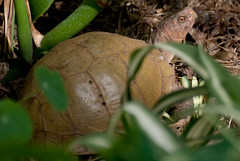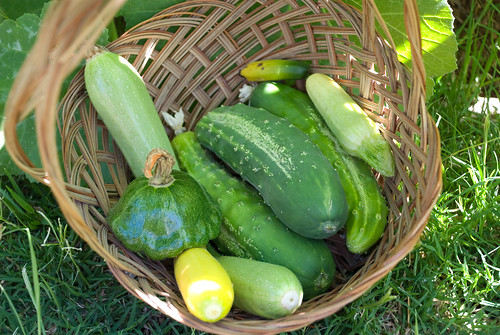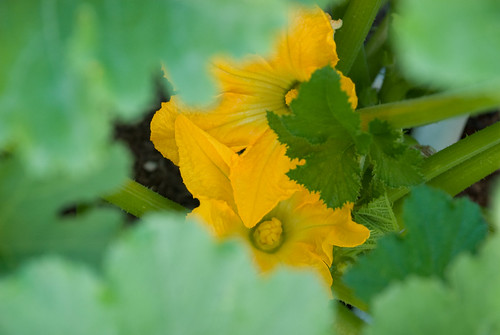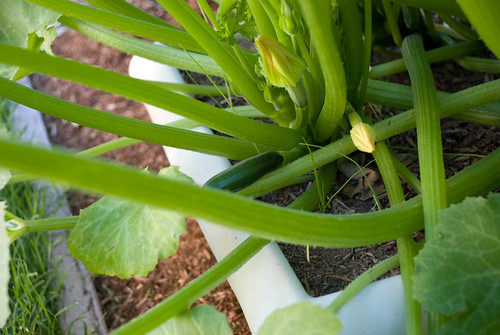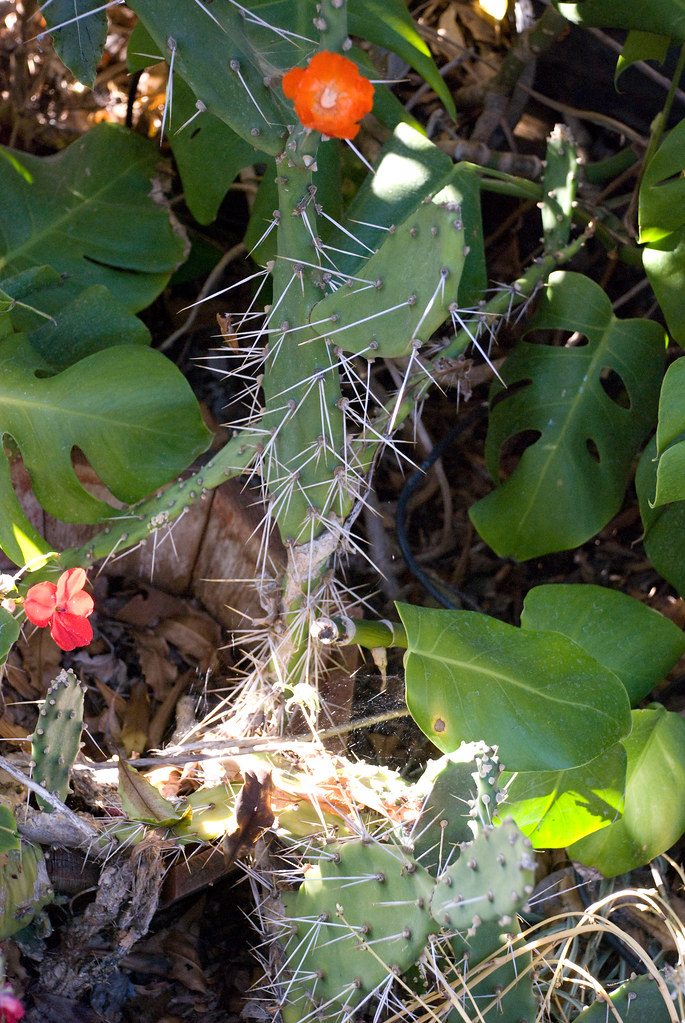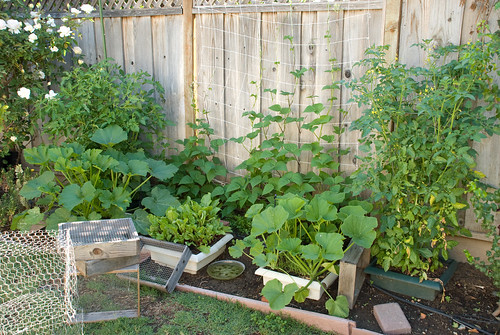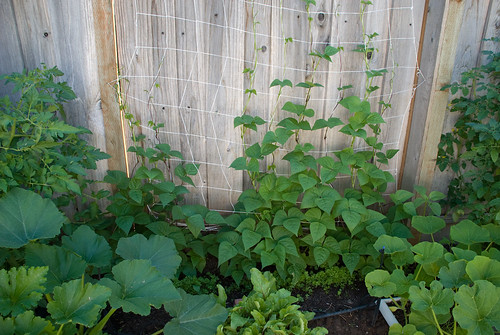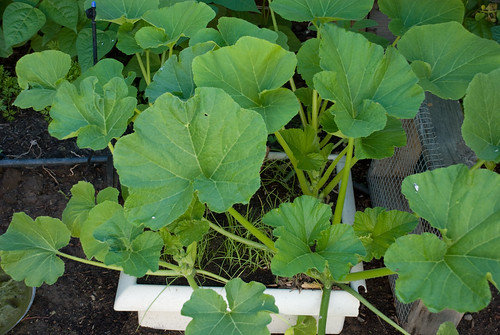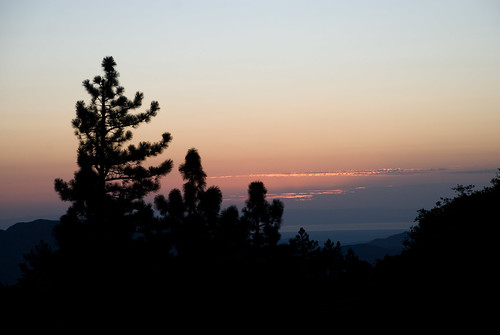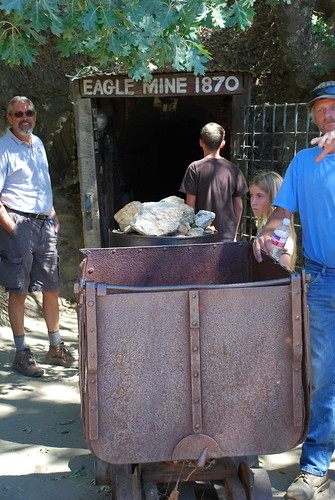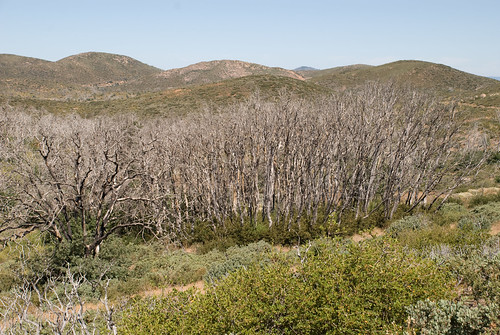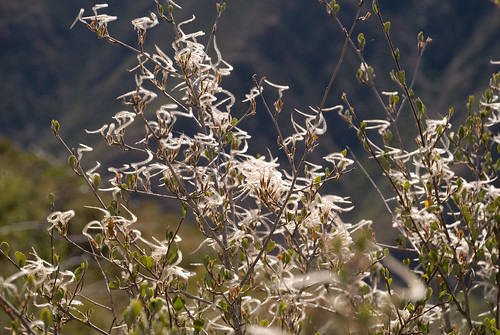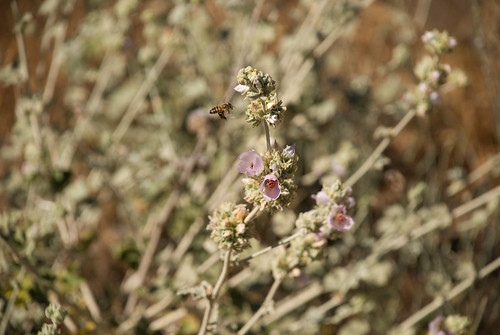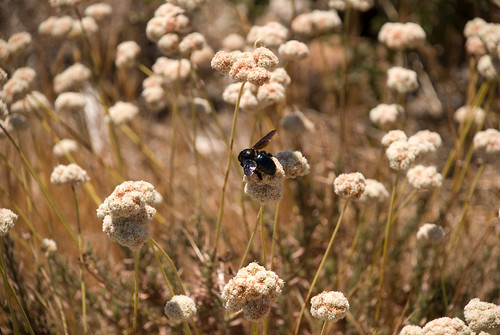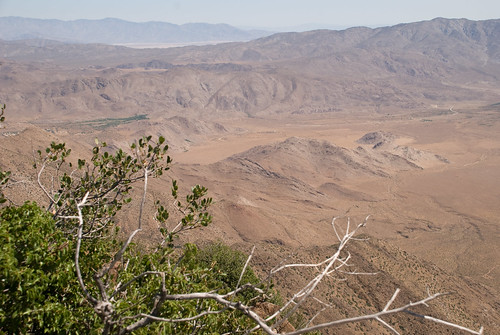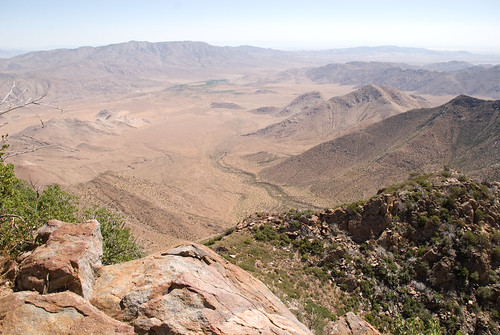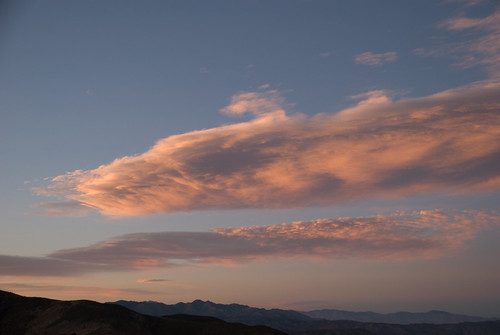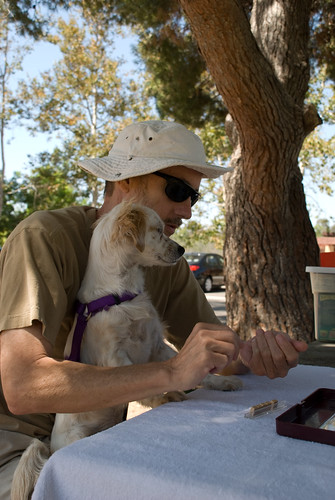I harvested the first real squashes yesterday. Yay! (And I ate most of them last night. Double-yay!)
In this harvest basket are a variety of squashes and three cucumbers. First, the squashes. For the friend who had never heard of a "Scalloped Squash," that's the funky-shaped, dark green blob (with dead blossom on top) at the left side of the basket, resting on the bright yellow zucchini. They are also known simply as "summer squash" or, when bright yellow (instead of dark green), as "Sunburst Squash" or, when pale green, as "Pattypan Squash" among other things. They taste generally like zucchini or crookneck squash. They're all yummy.
As I mentioned, there's a yellow zucchini in there and two light green zucchini. OK, now you're confused. You're looking at the two small squashes on the right and asking, "Why didn't you count those?" I didn't count those because they started dying on the vine. As I mentioned in my
last post, those two were the only blossoms on the plant when they formed. No male blossoms means no fertilization. No fertilization means the fruits won't form to accommodate the seeds within. You can really see where the embryonic dark green zuke has started turning yellow from the blossom end followed by turning brown. The process has started on the light green zuke, but pale-green-turning-yellow doesn't show up so much.
"But your squashes are so small!" you cry. Well, there's a reason. I picked that way on purpose. When they're small, they are more tender. When they're small, there's less food to have to process and eat. "What?!? Don't you want to share with your non-gardening friends?" Well, yes, I'd LOVE to share with my non-gardening friends! But there's a problem.
The problem is the Light Brown Apple Moth (
LBAM). This invasive, crop-damaging, threat to California agriculture was found in the state in 2007 in Alameda County and a
quarantine was slapped on the area. It has been spreading ever since despite an
ever-expanding quarantine area. A year ago, my yard was not in the quarantine area, but
now it is. I was stunned at how all-encompassing the zone has become in the last year. What this means is that I can't share my harvest with my next door neighbors, let alone with friends outside the quarantine area.
Part of the rules of the quarantine says that commercial growers, because they are officially inspected, get to ship outside their area. Similarly, because officially-sanctioned Community Gardens are officially inspected, the produce from those gardens can be removed to the homes of the gardeners, shared with friends, donated to food banks, etc.
And that brings up the notion that, until recently, was being touted in Public Service Announcements (PSAs). The announcements were suggesting that folks could grow some of their own produce in these challenging economic times. They further suggested that, if everyone planted an extra row, they could donate the proceeds to their local food bank or other charitable organization. With the quarantine on, we can't do that.
Make sure that you and your friends and neighbors know whether they are in the current quarantine area and that they know what the rules are. Nobody's going to come after you for violating the quarantine, BUT! If the LBAM continues to spread, the State or the County are likely to do something drastic like they did back in the early eighties when we had the Medfly issue and start spraying entire communities with insecticides.
The insecticide used then was Malathion, a popular, broad-spectrum insecticide. Malathion is a chemical in a class called organophosphates. Organophosphates also go by the moniker "nerve agents." Yes, as in "nerve gas," one "weapon of mass destruction." Granted, the amount used in controlling insect pests is a lot lower that the amount used in warfare, but still! Every night that the helicopters came through to spray, I had an asthma attack.
Speaking of PSAs, there's a new PSA now. It's really-really short and relatively content-free, but it touts being aware of invasive pests. It goes by so fast that I never can quite get the URL. I'll let you know when I do.
SO! I'll be harvesting my veggies young and tender and keeping them all to myself.
